A BROOKLYN GENTRIFICATION STORY (1900)
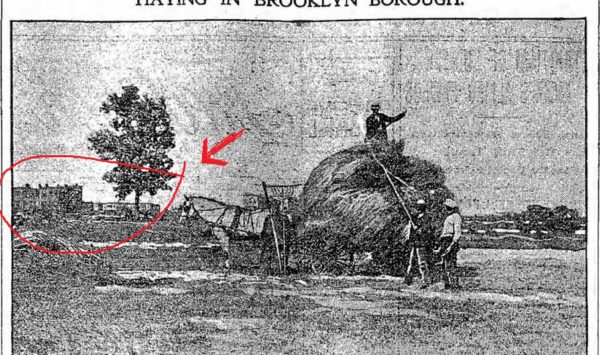
******************************************************************************************************************************** Brownstone Detectives investigates the history of our clients’ homes. The story you are about to read was composed from research conducted in the course of one of those investigations. Do you know the history of YOUR house? ******************************************************************************************************************************** (ABOVE: “Haying In Brooklyn Borough” shows farmers haying in the foreground while a row of new brownstones interlope in the background.) Chances are, if you are sitting anywhere within Brooklyn at this very moment, then you are sitting on what had once been a farm. Brooklyn began existing as farmland in the 1600s and it began to end that existence in the late 1800s and early 1900s. It was around this time that, in July of 1900, an intrepid Brooklyn Daily Eagle reporter took a trip out to the furthest reaches of Brownstone Brooklyn to see where the confluence of brownstones and farm horses collided. What he found made great copy. And it showed a more rustic world that had very recently existed in such neighborhoods as Bed-Stuy, Crown Heights, Prospect Lefferts Gardens, and other sections of the Eastern District (before houses were built there). The rural district that he trekked was the one that we now refer to as East New York. HAYING IN EAST NEW YORK As our reporter walked further and further south along Pennsylvania Avenue, he saw a district filled with streets and lots as far as the eye could see – which ran in this manner all the way down to Jamaica Bay. Those streets and […]
WHEN WOOD HOUSES BECAME EXTINCT (1909)
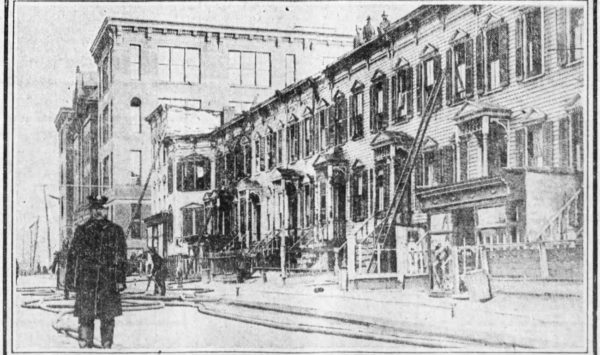
******************************************************************************************************************************** Brownstone Detectives investigates the history of our clients’ homes. The story you are about to read was composed from research conducted in the course of one of those investigations. Do you know the history of YOUR house? ******************************************************************************************************************************** On a cold December day in 1909, on a busy thoroughfare in Brownsville, the lives of hundreds of school children were invariably altered when a row of frame houses adjoining their school began to burn out of control. The flames “shot to the roof and then ran under the cockloft roof of ten two-story frame structures.” “Fanned by high wind, the smoke from the burning structures enveloped the schoolhouse,” noted the Brooklyn Daily Eagle. The school, which no longer exists, sat at one time on the corner of Dumont Avenue and Powell Street – where the Van Dyke II Senior Center now exists. The smoke enveloping P.S. 109, as the school was known, which had “accommodations for five thousand pupils,” had brought their “excited parents” by the dozens who “refused to believe at first that flames were not raging in the building.” “So quickly did the fire eat away through the row of frame houses that many of the inmates had narrow escapes.” That day, the city condemned at least 10 two-family houses which were housing approximately 25 families, making roughly 150 residents instantaneously homeless. EXTENDING THE FIRE LIMITS Advocates for the termination of the building of wood frame houses increased their pleas to city officials to extend the fire limits […]
THE BROOKLYN BARBER WHO BURGLED (1904)
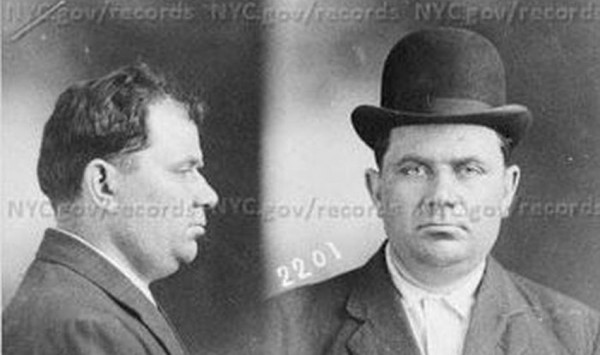
******************************************************************************************************************************** Brownstone Detectives investigates the history of our clients’ homes. The story you are about to read was composed from research conducted in the course of one of those investigations. ******************************************************************************************************************************** Abe Miller was fond of burglary. You might say that it was in his bones. He could not resist it any more than a child could resist candied apples at the fair. He burgled countless Brooklyn and Manhattan homes – more, certainly, than he was ever tried and convicted for – crossing the North River, at times, to burgle still more in New Jersey. Miller, aka Abram Miller, aka Abram Skudden, aka Abe Skudin, &c., &c., &c…was a burglar, though, of little note. As his life of crime ran from the early 20th century through 1940, he had been caught, convicted, and sentenced many times over. But he never reformed. GETTING MARRIED, ARRESTED, & DRAFTED Researching people who are long dead is like putting together the pieces of a puzzle that you find between the cushions of a couch – the pieces are a little dusty, some are broken, and usually they are not all there. In the end, if you do not have the puzzle’s box top, you are left to guess at what the whole picture looks like. This was the case with “Abe Miller.” THE PART ABOUT GETTING “MARRIED” & “DRAFTED” Miller first shows up in government records in 1904 when he married Lena Silverman 14 August on Manhattan. Both were from Russia, the two remaining […]
BLOOD ON THE SNOWBALL (1888)
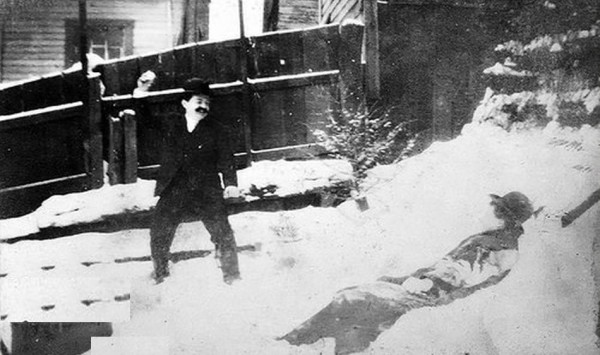
As the snow piled up during the Blizzard of 1888, Brooklynites began to experience countless fights. Snowball fights, that is. Most were lighthearted and fun, romps in the snow bringing joy and relief from the endless shoveling and the stress of everyday life with the white stuff. But sometimes these snowball fights turned ugly, exposing the more unsavory side of Brooklynites. They showed how quickly a snowball fight could evolve from a joyful game into mayhem-filled terror. Two cases, in particular, made the pages of the Brooklyn Daily Eagle during the week of the historic blizzard. One involved a razor. The second involved a gun. THE RAZOR The day after the “Great White Hurricane” struck Brooklyn, Vincent Ciemon was a very tired man. He had reason to be after a long day of shoveling snow following the first full day of the Blizzard of 1888. He had just been employed by the Long Island Railroad Company as that organization needed day laborers to help dig out their engines in the city and beyond. On his way home around 5 p.m., to the apartment where he lived with his family on East New York Avenue in Brownsville, Ciemon had just reached Rockaway Avenue “when a snowball struck him in the back.” Ciemon, identified by the Brooklyn Daily Eagle in the story as “The Italian,” had only a hundred or so feet before he arrived home and so, tired as he was, he did not even turn around to challenge his tormentors. […]
GIVING BATHS TO BROWNSVILLE (1905)
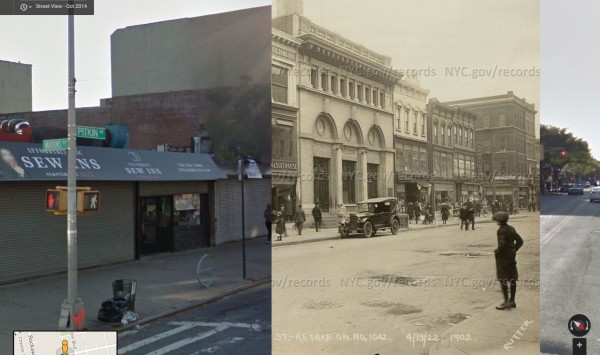
New York City has always been known for its progressiveness. Its mayors and city council seemed always to be trying to improve conditions for the masses – either out of a true passion to do good – or for the votes. In the 1890s, it was all about relieving its citizens from the oppressive heatwaves that were hitting the city by passing out free ice to all who would stand in line for it. At the turn of the century, it would be all about cleanliness and health. THE RISE OF THE BATHS According to 1908’s Modern Baths and Bath Houses, “out of 255,000 inhabitants of tenements…only 306 had bathtubs in the houses where they lived.” This, apparently, was appalling to the better classes which felt that the lower classes had to be scrubbed clean, thereby giving rise to the reference to Saturdays being the bath day. And so the bath house movement began, which was all about improving “the public health, dignity and upward mobility for those living in tenements.” In 1905, Pitkin Avenue’s public baths were opened. According to a blog post by Cory Seamer of Brooklyn Relics, the building used for Pitkin Avenue’s Public Bath is now used for something else: “Designed by architect A.S. Headman, the Pitkin Avenue Public Bath was built in 1903 at a cost of $84,456….the building’s façade has been heavily modified. The ground floor has been partially demolished and retro fitted with a glass storefront, the cornice has been removed and the […]
WHERE WAS THIS PICTURE TAKEN? PT. II (1924)
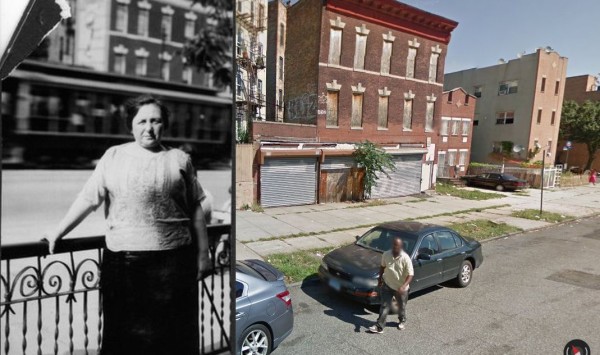
Junior Brownstone Detectives! In last week’s episode, “Where Was This Picture Taken, Pt. I,” we challenged you to a task of monumental proportions: “Study an historic photograph and determine where in Brooklyn it was taken.” As you’ll recall, while the photograph had some distinguishing elements in it, the location of the subject was not immediately discernible. Each of the elements therein could have been found within any of the sections of the borough. We decided, though, that studying the elements of the picture itself, along with just a bit of information about the individual within the picture, we might determine, with great specificity, exactly where the photograph was taken. Today, we are going to review some sources that the Brownstone Detectives use on a daily basis to solve everyday dilemmas such as this one. AN HISTORICAL DETECTIVE’S TOOLKIT Where do we begin when attempting to determine the Brooklyn location of an old photograph? There are a number of resources that can be of use in any mystery such as this. For the particular one we’ve presented you with, though, we will list the resources that we often use and show you how to use them in attempting to find a solution: Ancestry.com – If you have a name connected with the subject in the photo, as we did, this is always a good place to begin your search. At Ancestry.com, using the search function, place any names that you have into the engine, and then see what pops up. With […]